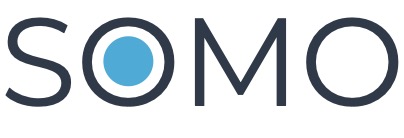Citizen Generated Data (CGD)
1. Crafting a Clear and Impactful Message: Highlighting Key Findings and Implications
Creating a clear and impactful message is the foundation of a successful presentation. This requires careful thought in structuring the content so that the key findings and implications of the CGD project are easily understood by the audience.
Steps for Crafting a Clear Message:
- Identify Key Findings: Determine the most important outcomes of the CGD project. What do you want your audience to know, believe, or act on after the presentation?
- Frame the Implications: Explain why these findings matter and how they impact the community or stakeholders. Highlight the social, economic, or environmental relevance.
- Keep It Simple: Avoid overloading the audience with too many details. Focus on the top three to five findings and provide a clear explanation of their implications.
- Organize for Flow: Start with an introduction that provides context, present the findings clearly, and end with a strong conclusion that emphasizes the next steps or call to action.
- Link Data to Human Stories: Use personal or community stories to connect data to real-life experiences, making the findings relatable and emotionally compelling.
Example Structure:
- Introduction: Brief background on the CGD project and its goals.
- Key Findings: Present findings with supporting data (charts, visuals) and short narratives that connect to community impact.
- Implications: Explain why these findings are significant, focusing on their relevance to community development.
- Conclusion: Call to action or next steps.
2. Public Speaking Tips for Delivering Presentations with Confidence, Including Storytelling to Make Data Relatable
Presenting data effectively requires not only knowledge but also strong delivery skills. Confidence in public speaking can significantly enhance the impact of your message. Storytelling, in particular, helps to humanize the data and make it more engaging.
Public Speaking Tips:
- Prepare Thoroughly: Practice your speech multiple times before the actual presentation. Rehearse with your slides and visual aids to ensure a smooth flow.
- Open Strong: Start with an attention-grabbing fact, question, or story to draw the audience in.
- Use Storytelling: Incorporate stories from the field or real-world examples that connect with the data. This personalizes the message and makes complex data easier to understand.
- Control Your Voice: Vary your tone and pace to maintain interest. Pausing at key moments helps emphasize important points.
- Body Language: Stand with confidence, make eye contact with the audience, and use hand gestures to reinforce points.
- Engage with Visuals: Use simple, clear visuals (charts, graphs, photos) to reinforce your message and help the audience visualize the data.
- Anticipate Questions: Think ahead about possible questions or challenges from the audience and prepare concise answers.
Storytelling Techniques:
- Begin with a Character: Introduce a community member or group impacted by the project, and narrate how the findings relate to their situation.
- Create Emotional Connection: Use descriptive language to paint a picture of the challenges and the positive changes brought by the project.
- Link to Data: Tie the story back to the findings, showing how the data supports the real-life outcomes.
3. Techniques for Engaging the Audience, Keeping Their Interest, and Encouraging Interaction
Audience engagement is crucial for a successful presentation. Keeping the audience’s interest requires more than just speaking well; it also involves making the presentation interactive and responsive to their needs.
Techniques for Engagement:
- Ask Questions: Involve the audience by asking for their opinions, experiences, or predictions related to the topic.
- Interactive Polls: Use simple polling tools to gather real-time input from the audience and display the results instantly.
- Use Stories and Examples: People are more engaged by stories than statistics alone. Include anecdotes that relate to your findings.
- Visuals and Multimedia: Incorporate compelling visuals, videos, or infographics to break up the flow of information and keep attention.
- Body Language and Movement: Move around the space (if possible) to engage different parts of the audience, but avoid pacing or fidgeting.
- Call for Participation: Encourage audience members to ask questions or share their perspectives during the presentation.
- Tailor to Audience Needs: Adapt your language, examples, and focus based on the composition of the audience. Are they community members, funders, or policymakers? Adjust accordingly.
4. Best Practices for Fielding Questions, Handling Objections, and Reinforcing the Message
Handling questions and objections with confidence is key to maintaining credibility and reinforcing your message. This is an opportunity to engage more deeply with your audience and address any uncertainties or concerns they might have.
Tips for Fielding Questions:
- Anticipate Common Questions: Think about potential questions or challenges that could arise and prepare answers in advance.
- Clarify the Question: If a question is unclear, politely ask the audience member to rephrase it to ensure you fully understand.
- Stay Calm and Composed: Even if a question is critical or challenging, maintain a calm and professional demeanor.
- Provide Evidence: Use data or examples from the project to back up your responses and reinforce your main points.
- Admit When You Don’t Know: If you don’t know the answer, it’s okay to admit it. Offer to follow up after the presentation with more information.
Handling Objections:
- Acknowledge the Concern: Validate the concern or objection to show that you understand the audience member’s point of view.
- Present Counter-Evidence: Calmly present the evidence or data that supports your position.
- Keep the Tone Positive: Avoid being defensive; instead, steer the conversation back to the positive impact of the project.
- Reinforce Key Messages: Use questions or objections as an opportunity to reemphasize your key findings and their importance.


